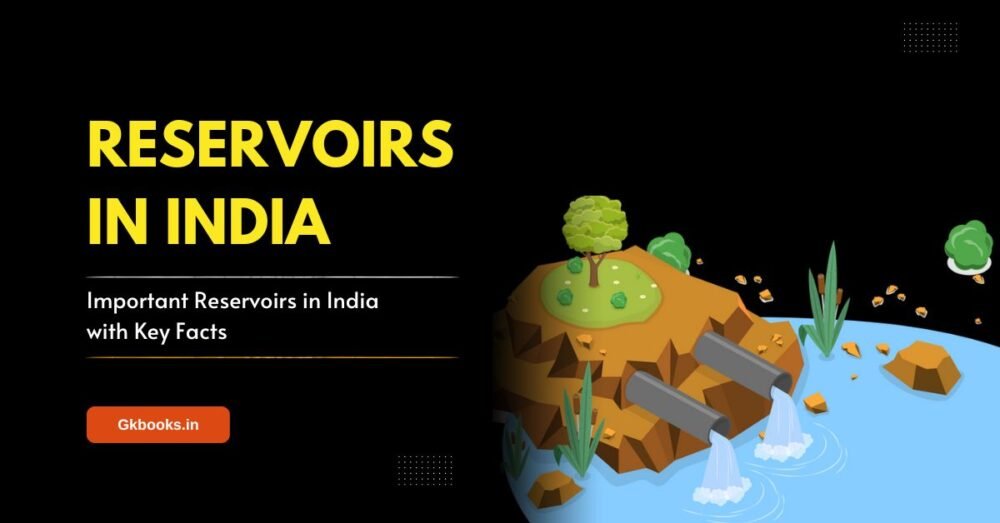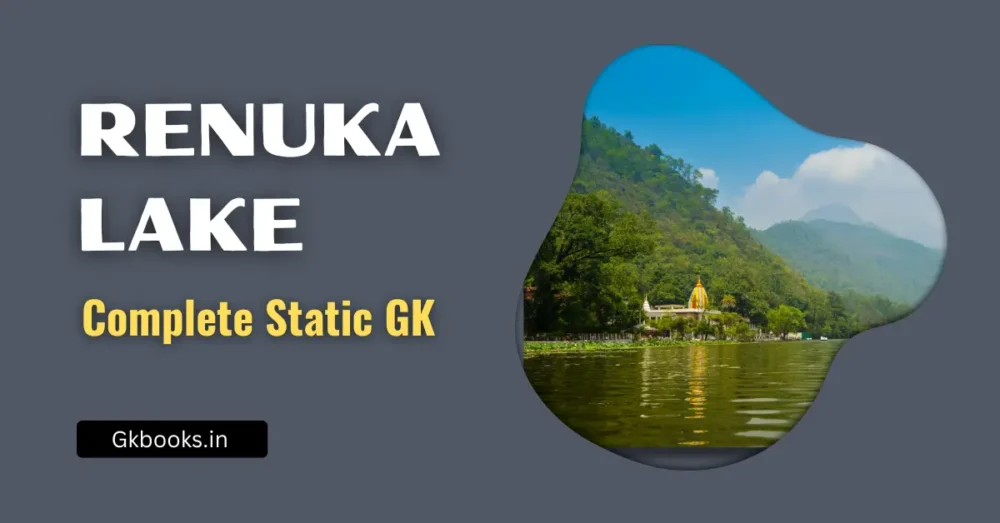Vembanad Lake, the longest lake in India and the largest in Kerala, is a vital topic for competitive exams. Known for its scenic beauty, houseboat tourism, and rich biodiversity, it plays a key role in Kerala’s ecosystem. This lake is also central to the famous Nehru Trophy Boat Race.
It is one of the most beautiful and important water bodies in India. It holds great significance in geography, environment, tourism, and economy, making it a frequently asked topic in exams like SSC, RRB NTPC, UPSC, and state-level exams.
Let’s explore all the key details in a simple and easy way.
Vembanad Lake in a Nutshell
| Feature | Details |
|---|---|
| Location | Kerala, India |
| Area | 2,033 km2 (785 sq mi) |
| Maximum Length | 96.5 km (60.0 mi) |
| Districts Covered | Kottayam, Alappuzha, Ernakulam |
| Other Names | Vembanad Lake (Kottayam, Vaikom, Changanassery), Punnamada Lake (Alappuzha, Punnappra, Kuttanadu), Kochi Lake (Kochi) |
| Islands in the Lake | Vypin, Mulavukad, Maradu, Udayamperoor, Vallarpadam, Willingdon Island |
| Kochi Port | Built around Willingdon and Vallarpadam islands |
| Kuttanad Region | Known as “The Rice Bowl of Kerala”; below sea level cultivation |
| Famous Event | Nehru Trophy Boat Race |
| Environmental Concern | Pollution in certain hotspots |
| Conservation Status | Identified under the National Wetlands Conservation Programme |
🔰Related Posts
🔘 Explore the Complete List of Indian Geography Topics
🔘 Also Explore: Tectonic Lakes: Types, Formation, Key Facts
🔘 Read Also: Sambhar Lake: Key Facts About India’s Largest Inland Saltwater Lake
Introduction
◾ Vembanad Lake is the longest lake in India and the largest lake in Kerala. It is also known as Vembanad Kayal in Malayalam.
◾ This beautiful lake stretches across several districts of Kerala and is famous for backwater tourism, houseboats, and the Nehru Trophy Boat Race.
Location and Geography
| Feature | Description |
|---|---|
| Location | Kerala, India |
| Districts Covered | Alappuzha, Kottayam, Ernakulam, and parts of Thrissur |
| Length | Around 96.5 km (60.0 mi) |
| Area | About 2,033 km2 (785 sq mi) |
| Maximum Depth | Nearly 12 m (39 ft) |
| Type | Brackish water (a mix of salt and fresh water) |
🧭 The Vembanad Wetland System is a part of this lake, making it one of the largest wetland ecosystems in India.
Ecological Importance
Vembanad Lake is not just a tourist attraction; it’s an ecological treasure.
- It supports mangroves, fish, and bird species.
- The lake is home to over 90 species of fish and 150 species of birds.
- It acts as a natural flood control system, absorbing excess rainwater.
- The lake’s wetlands help purify water and maintain the region’s climate balance.
🔹 Important Note: The Ramsar Convention has recognized Vembanad Lake as a Ramsar Site (Wetland of International Importance) since 2002.
Tourism and Cultural Importance
Vembanad Lake plays a central role in Kerala’s tourism industry, especially in backwater tourism.
Key Attractions
- 🚤 Houseboat Cruises – Tourists stay on traditional Kettuvallams (houseboats) and enjoy the serene waters.
- 🏆 Nehru Trophy Boat Race – Held every year in Punnamada Lake, part of the Vembanad system, this event attracts thousands of visitors.
- 🌴 Bird Watching – Nearby Kumarakom Bird Sanctuary is a paradise for bird lovers.
Cultural Significance
- The lake influences local festivals, music, and art forms of Kerala.
- It provides livelihood to many locals through fishing, tourism, and coir industries.
Economic Importance
The lake contributes significantly to Kerala’s economy:
- 💧 Fishing: A major source of income for nearby communities.
- 🌾 Agriculture: Supports paddy cultivation in the Kuttanad region, known as the “Rice Bowl of Kerala.”
- 🚢 Transportation: Serves as an inland waterway connecting various towns.
- 🌿 Tourism Revenue: One of the top tourist destinations in India.
Environmental Challenges
Despite its importance, Vembanad Lake faces several threats:
- Water Pollution due to agricultural and household waste.
- Shrinking Wetlands caused by land reclamation and construction.
- Invasive Species affecting native plants and animals.
- Climate Change leading to changes in salinity and fish population.
🌱 Conservation Efforts:
- The Vembanad Wetland Conservation Project aims to protect and restore the lake’s health.
- Government and NGOs are promoting eco-friendly tourism and awareness programs.
Quick Revision Facts (for Exams)
| Question | Answer |
|---|---|
| State | Kerala |
| Type of Lake | Brackish Water |
| Longest Lake in India? | Yes |
| Ramsar Site Since | 2002 |
| Main Boat Race | Nehru Trophy Boat Race |
| Important Bird Sanctuary | Kumarakom Bird Sanctuary |
| Region Known as “Rice Bowl of Kerala” | Kuttanad Region |
| Major Economic Activities | Fishing, Tourism, Agriculture |

Follow our Facebook or Instagram page for more infographics like this one about Vembanad Lake.
Fun Facts to Remember
- Vembanad Lake is also known by different names in different regions—Punnamada Lake (Alappuzha) and Vembanad Kayal (Kottayam).
- The Kumarakom area on its banks is one of Kerala’s most famous tourist spots.
- The Vembanad backwaters are connected to the Arabian Sea by narrow canals.
Why It’s Important for Exams
Vembanad Lake is a repeated question topic in:
- Geography and Environment sections of SSC, UPSC, and RRB NTPC exams.
- Kerala PSC and other state-level exams.
Tip for Aspirants:
Remember its location, type (brackish water), Ramsar status, and Nehru Trophy Boat Race—these are frequently asked in MCQs!
Final Summary
Vembanad Lake is not just a natural wonder—it’s a symbol of Kerala’s life and culture. Its calm waters, rich wildlife, and vital role in the state’s economy make it truly special.
For exam aspirants, learning about this lake helps in scoring easy marks in geography and environment sections.
Keep learning one topic a day—small steps lead to big results! Remember, knowledge + consistency = success. 🌿💪
FAQs on Vembanad Lake
👉 Kerala
👉 It spreads across several districts — mainly Alappuzha, Kottayam, and Ernakulam.
👉 It is fed by the rivers Meenachil, Pamba, Manimala, and Achankovil.
👉 It is a lagoon (backwater) lake.
👉 The Pamba River and several other small rivers drain into it.
👉 On the southwestern coast of India, in the state of Kerala.
👉 Near Kochi and Alappuzha.
Explore More Indian Geography
Important Water Reservoirs in India with Key Facts: Complete Guide
Renuka Lake: Key Details about Smallest Ramsar Wetland Sites of India
Keibul Lamjao National Park: The World’s Only Floating National Park
Brahmaputra River System, Tributaries, Map, Origin, Length: Complete Notes




